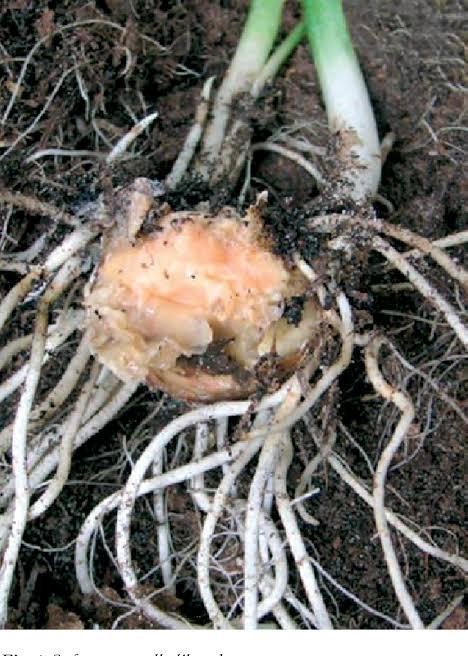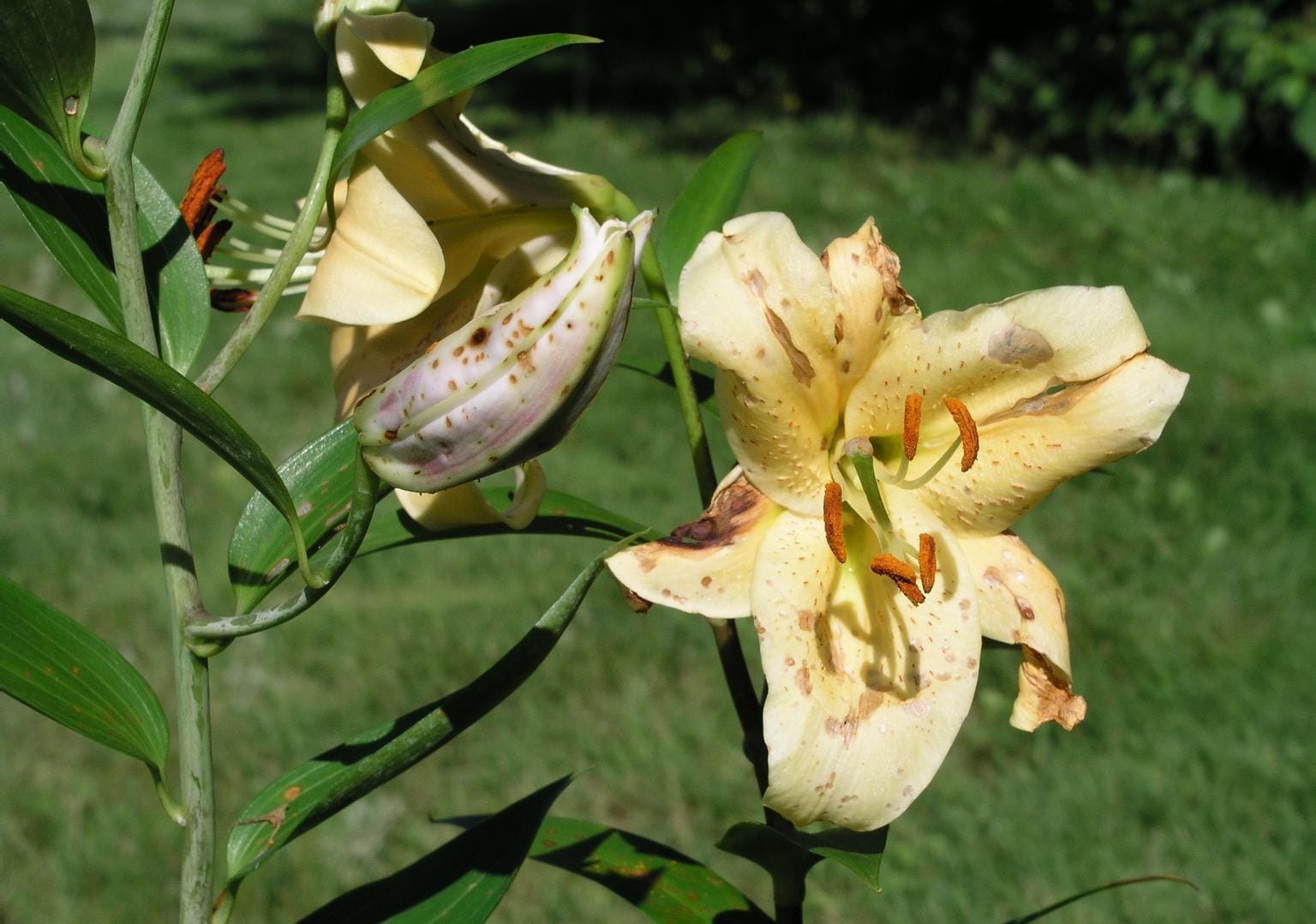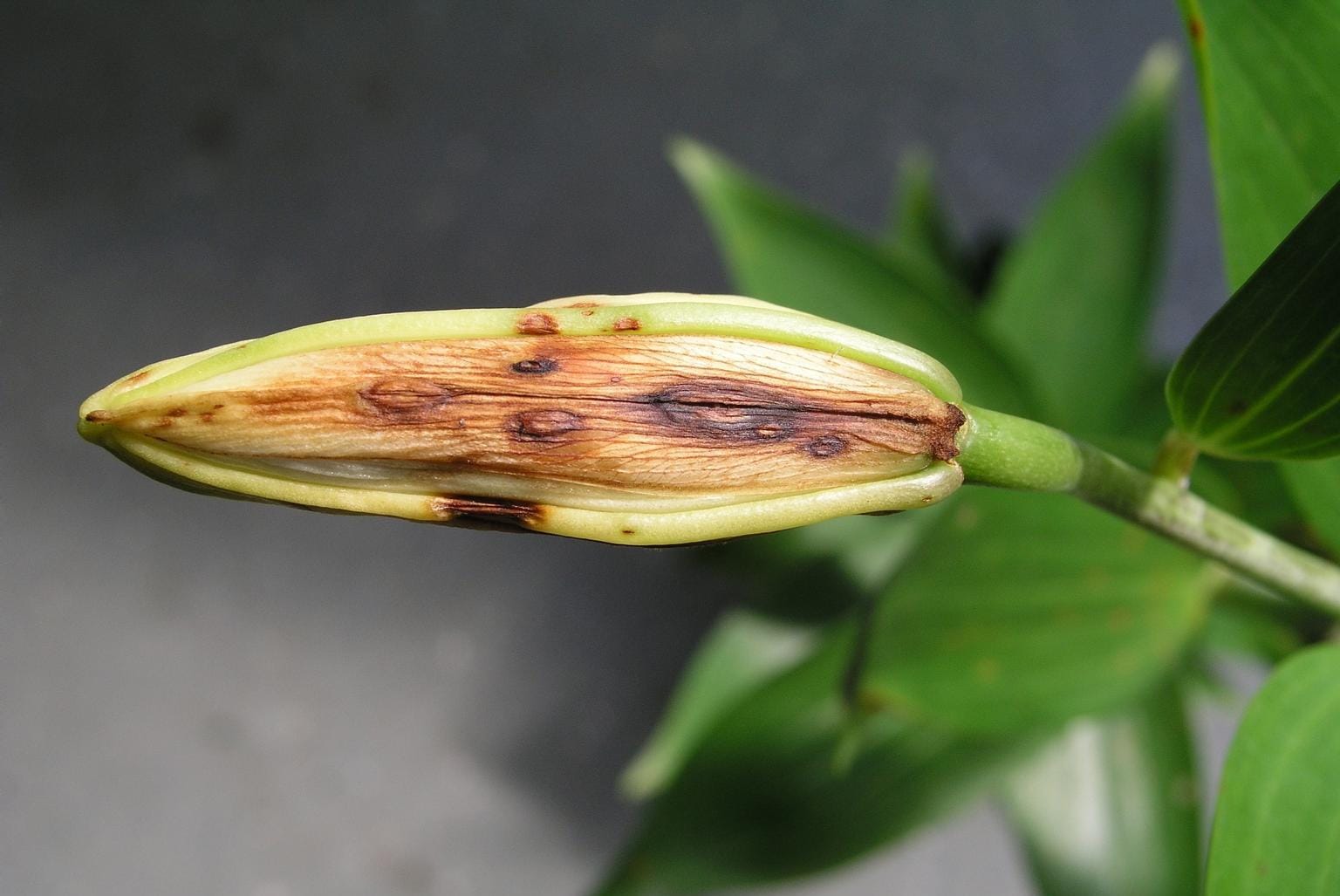Lily Plant
Red/Black Lily, a variety of Lilium, may have care requirements similar to other lilies. Plant in well-draining soil with full sun to partial shade. Water consistently and deadhead spent flowers for continuous blooming. Pruning helps maintain a compact and bushy appearance.
Habit
Perennial
Height
0.6 to 1.5 m
Growth
Moderate
Soil
Well-drained, Loamy
Shade
Full Sun to partial shade
Moisture
Moist
Edible
Yes
Medicinal
Yes
Origin
Europe, Asia
Climatic Condition
Temperate, Subtropical
Temperature (°)
15°C to 25°C
Humidity (%)
60% to 80%
Potting media
50% Loam, 40% Sand, 10% Compost
Fertilizers
Organic Fertilizer
Watering
Regular watering
Plant Weight
0.5 to 1.0 kg
Flowering Time
Spring to Summer
Soil Ph level
6.0 to 7.5
Water Ph level
6.0 to 7.0
Soil EC
0.5 to 1.0 mS/cm
Yield Per Plant
2 to 5 kg per plant
NPK ratio
10:10:10
life Span
2 to 4 years
Health Benefits
Ornamental, Air-purifying
Suggested Grow Media or Potting Mix ?
50% loamy soil, 30% compost, 20% sand
Suggested Fertigation/Fertilizers
Fertilize every 2 weeks with a balanced fertilizer.
Common Diseases and Remedies
Grey Mould , Basal Rot , Bulb Rot
Water soaked lesions may form on the stem , Flower bud may wilt and fail to open .
Avoid excess irrigation , Destroy bulbs with chocolate - colour rot at base of scales.
Spray Mancozeb @ 3 gr / Lt of water , Soil drenching with carbendazim @ 1 gm/ Lt
HEALTH BENEFITS
Some species have antioxidant properties, and lily extracts are used in skincare for hydration.
What Is An Lily Plant ?
The genus Lilium consists of herbaceous flowering plants growing from bulbs, all bearing large prominent flowers. They are known as true lilies. Lilies are significant in culture and literature globally, mostly found in temperate climates of the Northern Hemisphere, extending into the subtropics. Other plants may have "lily" in their common names, but they are not true lilies as they do not belong to the genus Lilium .
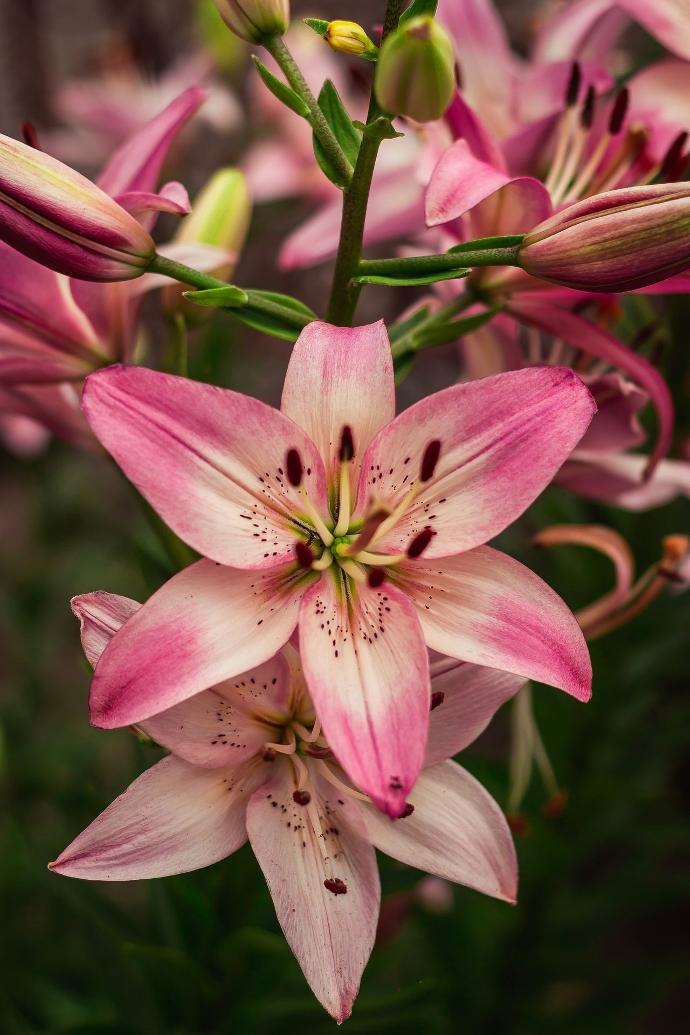
What Are The Different Types Of Lily Plants?
1. Orientpet Lilies
Orienpet lilies are the top choice for summer gardens, with a trumpet shape before full bloom.
2. Canada Lilies
Canada lilies, also known as wild lilies, are native to North America with curved petals in yellow or orange.
3. Stargazer Lilies
Stargazer lilies, a hybrid of oriental lilies, are known for their fragrance and large, colourful flowers.
4.Trumpet Lilies
Trumpet Lilies, also known as Aurelian Lilies, are a magnificent type of lily with trumpet-shaped, colourful, and highly fragrant flowers..
5. Casablanca Lily
The Casablanca Lily, a beloved hybrid of Oriental Lily, blooms in summer with beautiful white flowers known for their exquisite fragrance, often used in bridal bouquets.
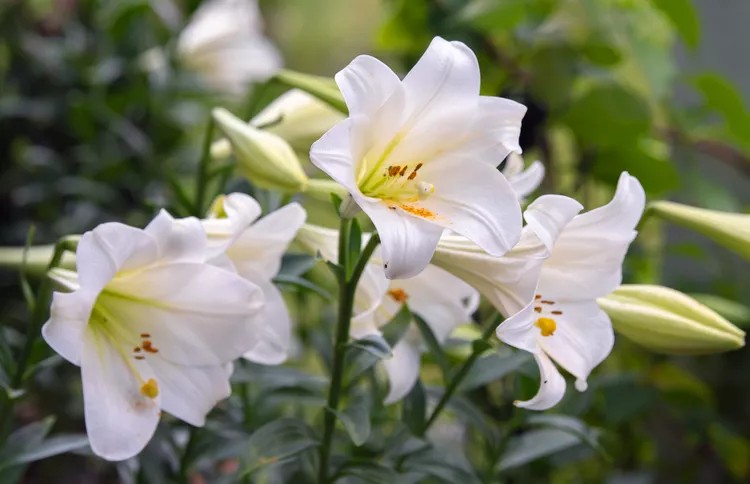
How to care for Lily Plants ?
Protect against pests, particularly voles and deer, as well as insects. Remove bright red lily beetles in early spring before they reproduce. Stake plants to support blossoms without damaging bulbs. Cut for bouquets, but only take 1/3 of the stem to allow bulbs to replenish for next year. Remove anthers to prevent staining before bringing indoors. Trim flower stems after blooming, but leave foliage until it dies back naturally to support bulb energy for the next season.
1. Location
Choose a spot for planting lilies that is not prone to waterlogging and where they won't be overshadowed by taller plants, ensuring good air circulation and protection from strong winds.
2. Sunshine
Sunshine is crucial for the development and health of lily plants, as it affects their internal clock and flowering patterns. Placing lilies in sunny spots with partial to full sun exposure ensures they grow well and bloom beautifully, enhancing the beauty of gardens and indoor spaces.
3. Soil
Most lilies thrive in rich soil that is not too heavy, except for Orienpet lilies which can handle a less nutrient-rich soil. Good drainage is key, and lilies prefer being planted in a raised bed or berm to prevent water from accumulating around the bulbs. The ideal pH for lilies is between 5.5 and 6.5.
4. Hydration
Proper hydration is essential for the health of lily plants, just as it is for any living being. It enables nutrient transport, supports metabolic processes, and prevents wilting. However, overwatering can cause root rot, so striking the right balance is crucial.
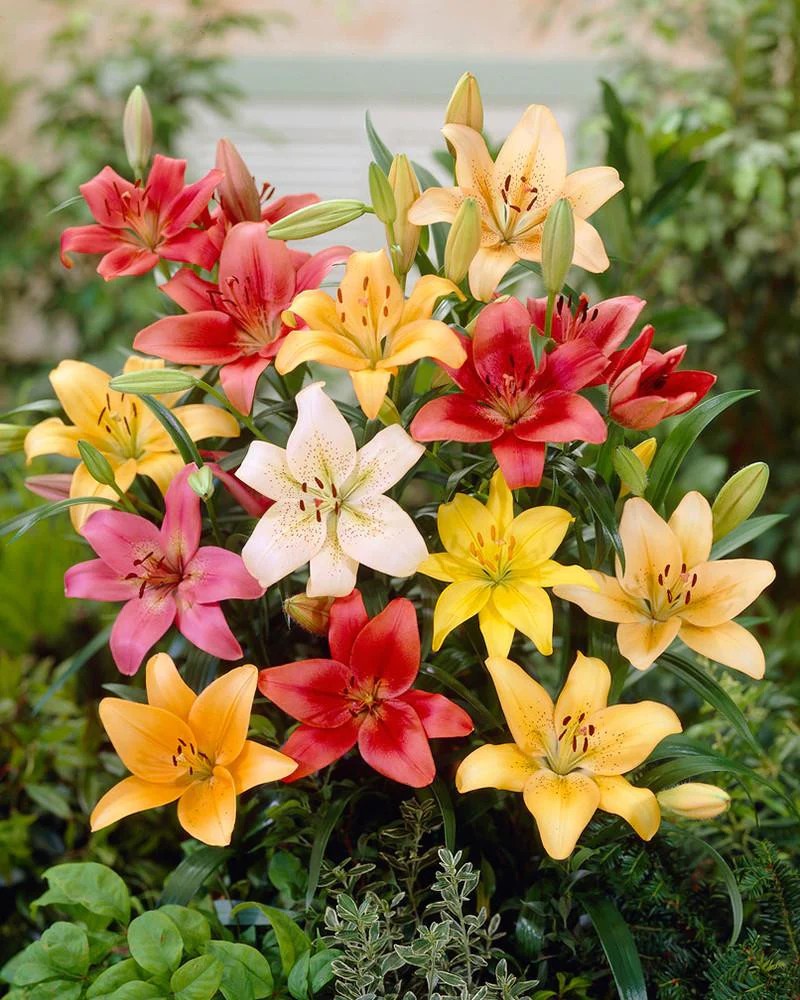
5. Nourishment
A balanced fertilizer containing nitrogen, phosphorus, and potassium is important for the health and growth of lily plants, promoting strong roots, lush foliage, and vibrant blooms. Compost can also improve soil structure and fertility, aiding in nutrient uptake and moisture retention. Regularly feeding lilies with these nutrients ensures they thrive and produce beautiful flowers year after year.
6. Issues
Various problems may hinder the growth and vitality of Lily plants, including pests like Aphids, mites, and snails, diseases like botrytis blight and fungal leaf spot, root rot from overly wet or poorly drained soil, imbalanced nutrient levels causing yellowing leaves, extreme temperatures, drought, and excessive sunlight causing stress, and issues with bulb rot, bulb mites, and bulb scale mites. Regular monitoring, proper cultural care, selecting disease-resistant varieties, and ensuring proper soil drainage are important steps to prevent and address these issues.
What are the Benefits of Lily Plants ?
Lily plants are a popular choice for gardens and indoor spaces due to their aesthetic appeal, air purification abilities, stress reduction properties, pollinator attraction, medicinal uses, cultural significant Lily plants are commonly chosen for gardens and indoor areas because of their beauty, air cleaning capabilities, stress-relieving qualities, ability to attract pollinators, medicinal benefits, and cultural importance.

FAQs About Growing Lily Plants
1. What is essential for the growth and flowering of lily plants?
Adequate sunlight exposure is crucial for the thriving of lily plants.
2. What are the preferred soil conditions and sunlight needs for lily plants?
Lily plants do best in well-draining soil with a slightly acidic to neutral pH, and they typically prefer full sun to partial shade. Gardeners can ensure optimal growth by choosing a spot with enough sunlight, improving soil drainage and fertility with organic matter, and watering regularly during the growing season.
3. What are some common pests that can harm lily plants?
Common pests that can damage lily plants include aphids, mites, and snails
4. What are some indicators of nutrient deficiencies in lily plants?
Signs of nutrient deficiencies in lily plants may include leaf discoloration, stunted growth, and reduced flowering. Conducting a soil test can help identify specific deficiencies and guide appropriate fertilization practices to address them.
5. What are popular types of lily plants?
Popular types of lily plants consist of Asiatic lilies, Oriental lilies, and Daylilies.

